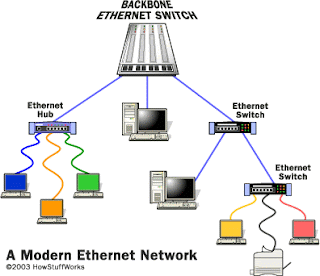Modulation & Demodulation
Modulation
In electronics and telecommunications, modulation is the process of varying one or more properties of a high-frequency periodic waveform, called the carrier signal, with a modulating signal which typically contains information to be transmitted. This is done in a similar fashion to a musician modulating a tone (a periodic waveform) from a musical instrument by varying its volume, timing and pitch. The three key parameters of a periodic waveform are its amplitude (“volume”), its phase (“timing”) and its frequency (“pitch”). Any of these properties can be modified in accordance with a low frequency signal to obtain the modulated signal. Typically a high-frequency sinusoid waveform is used as carrier signal, but a square wave pulse train may also be used.
In telecommunications, modulation is the process of conveying a message signal, for example a digital bit stream or an analog audio signal, inside another signal that can be physically transmitted. Modulation of a sine waveform is used to transform a baseband message signal into a passband signal, for example low-frequency audio signal into a radio-frequency signal (RF signal). In radio communications, cable TV systems or the public switched telephone network for instance, electrical signals can only be transferred over a limited passband frequency spectrum, with specific (non-zero) lower and upper cutoff frequencies. Modulating a sine-wave carrier makes it possible to keep the frequency content of the transferred signal as close as possible to the centre frequency (typically the carrier frequency) of the passband.
A device that performs modulation is known as a modulator and a device that performs the inverse operation of modulation is known as a demodulator (sometimes detector or demod). A device that can do both operations is a modem (from “modulator–demodulator”).
Demodulation
Demodulation is the act of extracting the original information-bearing signal from a modulated carrier wave. A demodulator
is an electronic circuit (or computer program in a software defined radio) that is used to recover the information content from the modulated carrier wave.
These terms are traditionally used in connection with radio receivers, but many other systems use many kinds of demodulators. Another common one is in a modem, which is a contraction of the terms modulator/demodulator.


